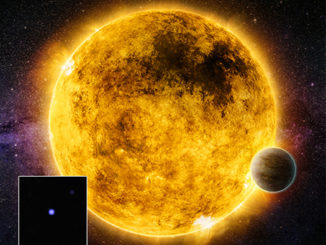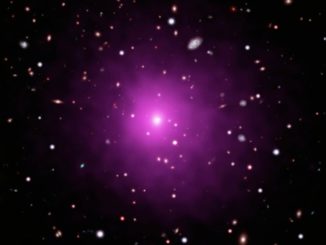In the latest installment in NASA’s data sonification series, observations by the Chandra X-ray Observatory and other telescopes have been converted into sound, producing audio tapestries that complement the visual representations. The latest installment incorporates three captivating vistas: the Chandra Deep Field South, the Cat’s Eye Nebula and Messier 51, the Whirlpool galaxy.
The Chandra Deep Field South (Image: X-ray: NASA/CXC/Penn State/B.Luo et al.; Sonification: NASA/CXC/SAO/K.Arcand, SYSTEM Sounds (M. Russo, A. Santaguida)
The Chandra Deep Field is the deepest image ever captured in X-rays, the result of more than 7 million seconds of exposure time. Virtually every star-like point in the image is a galaxy and as a horizontal playback “head” moves up the image, different tones sound as each object is passed with colours mapped to specific tones.
The Cat’s Eye and the Whirlpool galaxy are more diffuse targets and the soundscapes, played by a rotating line similar to a radar display, differ accordingly. Volume is determined by the brightness of an area while pitch is determined by distance from the center of the object, with higher pitches farther out.
The Cat’s Eye Nebula (image: X-ray: NASA/CXC/RIT/J.Kastner et al.; Optical: NASA/STScI; Sonification: NASA/CXC/SAO/K.Arcand, SYSTEM Sounds (M. Russo, A. Santaguida)
“Data sonification maps the data from these space-based telescopes into a form that users can hear instead of only see, embodying the data in a new form without changing the original content,” NASA said in a news release.
The Whirlpool Galaxy (Image: X-ray: NASA/CXC/Wesleyan Univ./R.Kilgard et al; UV: NASA/JPL-Caltech; Optical: NASA/ESA/S. Beckwith & Hubble Heritage Team (STScI/AURA); IR: NASA/JPL-Caltech/ Univ. of AZ/R. Kennicutt; Sonification: NASA/CXC/SAO/K.Arcand, SYSTEM Sounds (M. Russo, A. Santaguida)



